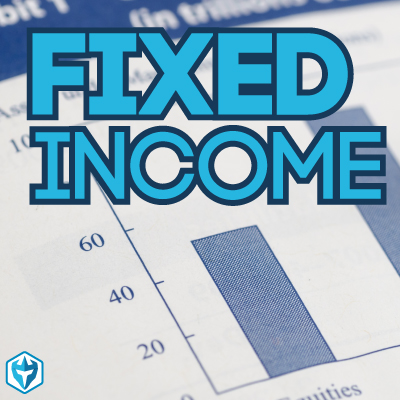A fixed annuity provides more excellent stability and predictability than other annuities, but at the expense of potentially higher returns on your principal. Variable and indexed annuities, for example, share some characteristics with fixed annuities but may offer higher payouts and risks. Variable Annuity vs. Fixed Annuity Many financial professionals believe that fixed annuities are the most secure type of annuity. It’s a simple concept: an annuity company promises you a guaranteed minimum return based on the number of your contributions. You can calculate how much your annuity balance will increase over time. Distributions from a variable annuity are based on the investment’s performance in the market. Variable annuity payments, like mutual fund contributions, are invested in a diversified portfolio that may include stocks, bonds, and other assets. If your investments grow faster than the market, your account balance and payments will rise more quickly than expected. If your investments perform poorly, your credit may decrease, reducing the amount of future income you receive. Index Annuity vs. Fixed Annuity You take on more risk with an index annuity than a fixed annuity but less with a variable annuity. Indexed annuities base their return on a market index, such as the S&P 500. When the index rises, you earn more; when it falls, you earn less. Unlike a variable annuity, an index annuity limits how much you can gain or lose each year through a cap on gains and a floor on losses. The contract might, for instance, stipulate that the floor is 0%. In good years, you can earn no more than 8% implying that you won’t lose money during market downturns when the index drops below zero. Because of the cap, your annuity will not increase in value as much during years when the market performs exceptionally well in exchange for this security. What is Fixed Index Annuity? A fixed index annuity is simply another name for an indexed annuity. Your return is based on a stock market index, with a floor and a cap that restrict your potential gains and losses. This term is used in the annuity industry to indicate that an index annuity is a hybrid product that combines features of both fixed and variable annuities. The Benefits of a Fixed Annuity
- Simplicity. One of the most significant advantages of fixed annuities over other types of annuities is their simplicity. You can quickly compare terms and rates to find the best deal for your requirements. Variable and index annuities, however, are complicated and rife with underlying fees. Some indexed and variable annuities may be good bets. However, it’s much simpler to find an excellent fixed annuity deal due to the greater clarity of the contract terms.
- Guaranteed profits. A fixed annuity provides a steady return on the money invested each year. Fixed annuity rates are often higher than rates on CDs or savings accounts, so you can get a higher return with less risk. Unlike deposit and savings account certificates, the Federal Deposit Insurance Corporation does not protect fixed annuities. While annuities are insured in other ways, you should only buy annuities from well-reviewed and well-financed companies with a low likelihood of going bankrupt.
- Predictability. Because a fixed annuity earns a fixed return, you can predict how much you’ll earn in the future, making retirement planning much more manageable. The performance of various investments determines your actual return with variable and indexed annuities.
The Drawbacks of a Fixed Annuity
- There is less potential for gain in a fixed annuity. There is no participation in market gains with a fixed annuity, but at least you won’t lose money. During good years, a variable or indexed annuity could help you grow your savings faster than a fixed annuity.
- Guaranteed returns will eventually expire. After you sign up, the annuity company will only guarantee your fixed, minimum return rate for a certain number of years. When that period expires, they will continue to pay you interest.
- Inflation may reduce returns. A fixed annuity might not be able to keep up with your savings during times of high inflation. Adding a Cost of Living Adjustment (COLA) rider to your fixed annuity payments may help them avoid losing value due to inflation. You may be able to protect the purchasing power of your fixed annuity payments from the effects of inflation by adding a COLA rider to them.
Contact Information:
Email: [email protected]
Phone: 8139269909
Bio:
For over 30-years Joe Carreno of The Retirement Advantage has been a Federal Employee Retirement System specialist (FERS) as well as a Florida Retirement System specialist (FRS) independent advocate. An affiliate of PSRE (Public Sector Retirement Educators), a Federal Contractor & Registered Vendor to the Federal Government, also an affiliate of TSP Withdrawal Consultants. We will help you understand your FERS & FRS Benefits, TSP & Florida D.R.O.P. withdrawal options in detail while recognizing & maximizing all concurrent alternatives available.Our primary goal is to guide you into retirement with no regrets; safe, predictable, stable, for life. We look forward to visiting with you.
Disclosure:
Not affiliated with the U.S. Federal Government, the State of Florida, or any government agency. The firm is not engaged in the practice of law or accounting. Always consult an attorney or tax professional regarding your specific legal or tax situation. Although we make great efforts to ensure the accuracy of the information contained herein we cannot guarantee all information is correct. Any comments regarding guarantees, safe and secure investments & guaranteed income streams or similar refer only to fixed insurance and annuity products. Fixed insurance and annuity product guarantees are subject to the claimsâ€paying ability of the issuing company. Annuities are long-term products of the insurance industry designed for retirement income. They contain some limitations, including possible withdrawal charges and a market value adjustment that could affect contract values. Annuities are not FDIC insured.













